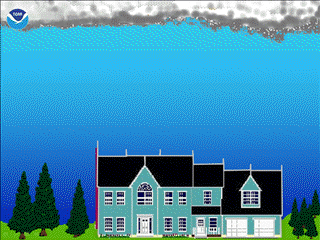 Lightning rods (and the accompanying protection system) are designed to protect a house or building from a direct lightning strike and, in particular, a lightning-initiated fire. Note that lightning protection systems do not prevent lightning from striking the structure, but rather intercept a lightning strike, provide a conductive path for the harmful electrical discharge to follow (the appropriate UL-listed copper or aluminum cable), and disperse the energy safely into the ground (grounding network). It's very important that these components be properly connected (bonded) to minimize the chances for any sparks or side flashes.
Lightning rods (and the accompanying protection system) are designed to protect a house or building from a direct lightning strike and, in particular, a lightning-initiated fire. Note that lightning protection systems do not prevent lightning from striking the structure, but rather intercept a lightning strike, provide a conductive path for the harmful electrical discharge to follow (the appropriate UL-listed copper or aluminum cable), and disperse the energy safely into the ground (grounding network). It's very important that these components be properly connected (bonded) to minimize the chances for any sparks or side flashes.
While lightning rods help protect a structure from a direct lightning strike, a complete lightning protection system is needed to help prevent harmful electrical surges and possible fires caused by lightning entering a structure via wires and pipes. A complete system also includes electrical surge protection devices for incoming power, data, and communication lines; and surge protection devices for vulnerable appliances. Lightning protection may also be needed for gas piping.
Any lightning protection system should follow the national safety standards and requirements of the Lightning Protection Institute, National Fire Protection Association, and Underwriters Laboratories.